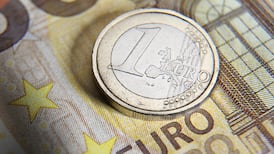The economy we lived in last month has vanished. Full employment, budget surpluses, rainy day funds – forget them, they’re gone.
The coronavirus has effectively downed an eight-year cycle of economic expansion, and blown a hole in the Government’s finances.
The scale of the reversal will be dictated by the duration of the outbreak and the infection rate, unknowns at this stage.
Typically we’re blindsided by these sort of crises. They tend to catch us off guard – think of the housing and credit market bubble of 2008, or the oil-price shocks of the 1970s.
This time, however, we’re imposing the downturn on ourselves by shutting down all non-essential parts of the economy, a medical necessity to avoid tens of thousands of virus-related deaths. It’s a unique event. We’re essentially putting the economy in a medically-induced coma for an indefinite period.
Modern economies are dominated by service activities driven by consumer demand – they account for 70-80 per cent of economic output – in contrast to previous eras when the production of goods in factories was the main economic activity.
You don’t need to be an expert to predict the likely impact of confining consumers to their homes for an extended period. We’re already surrounded by empty shops and closed businesses.
Morgan Stanley economists suggest the US economy is looking at a 30 per cent annualised decline in gross domestic product (GDP) in the second quarter, a level of contraction not seen since the second World War. The firm’s estimates assume the virus peaks in April and May, before growth starts to recover.
On Thursday last week the US Labor Department reported a near 30 per cent jump in jobless claims to 281,000. But that number looks modest next to the number of new claims that Goldman Sachs foresees in the next weekly report: 2.25 million.
"Economic data in the near future will be not just bad, but unrecognisable," Credit Suisse said in a note on Friday.
Working population
The Irish Government has indicated that as many as 400,000 people could lose their jobs, equivalent to a fifth of the working population.
"Many of these could return if the lockdown is relatively short [eight weeks] but between a quarter and a third will likely be lost permanently," EY Ireland's chief economist Neil Gibson says, while warning that a more prolonged lockdown and containment phase would escalate these job-loss estimates.
That is almost a complete unravelling of the hard-won economic gains made here since 2012. Employment has risen by 470,000 since the first quarter of 2012.
The possibility of an economic depression – essentially an extended recession marked by significant declines in income and employment – has also been touted as a possible endgame if the virus can’t be halted by April and workplaces and shops remain closed. Some are predicting the shutdown might last for six months and beyond.
The more optimistic forecasters are, however, hoping governments can engineer a V-shaped economic recovery, essentially a steep decline – which we’re in now – followed by an equally rapid bounce back with the right stimulus measures, in contrast to the 2008 crisis.
They point to the fact that the financial crisis preyed on a particular weaknesses in the Irish financial sector, namely over-leveraged banks, and left us dealing with a legacy of arrears and NPLs (non-performing loans). Coronavirus has not precipitated a similar collapse in asset values or a significant pick-up in debt, suggesting activity – consumer spending – could recover quickly.
The Government has also entered the crisis in a relatively strong budgetary position. The austerity programme that followed the last crash was largely dictated not by the cost of bailing out the banks, but by the phenomenally high budget deficits that arose as tax receipts crashed and failed to cover public spending.
That said, the 2008 crisis did not cause major parts of the global economy to simultaneously go into cardiac arrest as large parts of the world go into lockdown, as we’re now seeing. An estimated 20 per cent of the global population, or one in five people, are under lockdown.
State resources
The cost of dealing with the outbreak has also downed the Government’s budgetary plans for the foreseeable future.
In the run-up to the recent election we were debating how €11 billion in additional State resources might be deployed over the next five years. That conversation has been rendered almost meaningless, with the cost of coronavirus measures – from unemployment aid, income supports, credit guarantees and additional health spending – now put at €15 billion this year alone.
“It’s a lot of money, but we can afford it,” Ibec’s director of policy and public affairs, Fergal O’Brien said last week as the employers’ group called on the Government to roll out a programme of income supports to households that have lost their regular income. And maybe he’s right.
Minister for Finance Paschal Donohoe has framed much of his budget and tax policy around being in a position to cushion the economy when a future downturn arrives. It's now time to deploy.
















